Mungyeong Seonyudonggyegok Valley (선유동계곡(문경))
13.9Km 2025-09-10
Wanjang-ri, Mungyeong-si, Gyeongsangbuk-do
+82-54-550-6392
Seonyudonggyegok Valley in Mungyeong is longer and more beautiful than the valley of the same name in Goesan. Daeyasan Mountain (931 meters) runs across both valleys, which are 10 kilometers apart from each other. The valley is relatively untouched as it is not yet well known to the public. At the beginning and the end of the trail are Hakcheonjeong and Chirujeong Pavilions, respectively. Both sides of the valley are lined with thick forests of ancient pine trees. A number of stone carvings can be found in the forest, and the most famous one reads “Seonyugyegok.” It was written by Choi Chi-won, a leading scholar of the Silla kingdom.
Daeyasan Mountain (대야산)
14.0Km 2024-02-22
Gaeun-eup, Mungyeong-si, Gyeongsangbuk-do
Daeyasan Mountain is a stunning peak standing at an elevation of 931 meters within the confines of Songnisan National Park. It boasts picturesque valleys, including Seonyudonggyegok Valley and Yongchugyegok Valley. Among the notable attractions within Yongchugyegok Valley is the Yongchupokpo Falls, characterized by its three-tiered cascades, with a unique heart-shaped pool formed amidst the milky-white granite. After a 20-minute ascent from Yongchu, visitors can experience the breathtaking sight of moonlight reflecting off the rocks and the valley, known as Woryeongdae.
Woraksan National Park (월악산국립공원)
14.1Km 2023-03-24
1647, Mireuksonggye-ro, Jecheon-si, Chungcheongbuk-do
+82-43-653-3250
Woraksan National Park is located along the Baekdudaegan Mountain Range between Sobaeksan and Songnisan Mountains. The rugged mountain is softened by the waterfalls and small pools found within the valleys. The area was designated as a national park on December 31, 1984. The mountain is surrounded by Chungjuho Lake to the north, the Eight Scenic Views of Danyang and Sobaeksan Mountain to the east, and Mungyeongsaejae Pass and Songnisan Mountain to the south. The main peak of Woraksan National Park is Yeongbong Peak, reaching an altitude of 1,097 meters above sea level. The path there is steep, with sections of rock stretching 150 meters in x_height. There is also a 4-kilometer-long path circling the base rock.
Ssanggok Valley (쌍곡구곡)
14.6Km 2022-08-31
242, Ssanggok-ro, Chilseong-myeon, Goesan-gun, Chungcheongbuk-do
+82-43-542-5267
Ssanggok Valley, which is located in Chilseong-myeon, Goesan-gun, is 10.5km long stretching from Ssanggok village to Jesurijae.
The valley is surrounded by Bobaesan Mountain, Gunjasan Mountain and Bihaksan Mountain and clear water flows all year down the walls of a series of unique rock formations.
Thanks to its scenic beauty, many Confucian scholars used to visit here to enjoy literature and nature.
Ssanggok Valley is composed of nine valleys and each has its own unique atmosphere.
The first valley, Holongso, flows into a swamp area with many old pine trees nearby creating a picturesque view. The second valley is called Sogeumgang and it is said that its appearance changes with every season. Tteokbawi (rice cake rock) Valley gets its name from the shape it takes on, which is like a sliced rice cake. Similar to the first valley, Munsuam Valley, the fourth valley also has water flowing over uniquely shaped rocks with many old pine trees and flora. The fifth valley has quite a view of parallel rocks on both sides, while the sixth valley offers magnificent vistas of water flowing into a pool formed by the rocks. The water cascading down a huge boulder is said to look like the pleats of a woman’s skirt unfolding at the seventh valley. The eighth valley gathers water into a pond shape from the waterfall; legend says that fairies bathe here. The ninth valley is wide and refreshingly cool even during the hottest summer months.
Songgyegyegok Valley (송계계곡)
14.8Km 2022-07-25
Mireuksonggye-ro, Jecheon-si, Chungcheongbuk-do
+82-43-653-3250
Songgyegyegok Valley lies at the foot of Woraksan Mountain in Jecheon, Chungcheongbuk-do. Crystal-clear water flows between the rocks that are scattered throughout the valley. The valley is a perfect summer getaway as the forest and cool water provide much needed shelter from the heat. In fall, visitors can enjoy fall foliage. There are various attractions in the mountain for visitors to explore.
Daeyasan Yongchugyegok Valley (대야산 용추계곡)
15.7Km 2021-02-16
Gaeun-eup, Mungyeong-si, Gyeongsangbuk-do
+82-54-550-6414
Yongchugyegok Valley is considered the most majestic among the eight scenic views of Mungyeong. The valley is locating along the rocky foothills of Daeyasan Mountain, bordering Goesan-gun, Chungcheongbuk-do. According to legends, this valley was where two dragons soared into the heavens and their traces still remain on the two huge granite rocks. The valley is also known to have a pool of water that never dries up, and people of the past would come here to pray for rain at times of drought.
Zipline Mungyeong (짚라인 문경)
16.2Km 2021-02-22
174, Buljeong-gil, Mungyeong-si, Gyeongsangbuk-do
+82-1588-5219
Zipline Mungyeong was built in Buljeong Recreational Forest in Mungyeong, Gyeongsangbuk-do by Zipline Korea under strict supervision and design by professional engineers after several years of overseas field survey. Visitors can enjoy the zipline regardless of weather conditions all year around. This eco-friendly activity is sure to help release stress.
Ageobong Peak (악어봉)
17.0Km 2024-02-22
Sindang-ri, Salmi-myeon, Chungju-si, Chungcheongbuk-do
Ageobong Peak is situated within Woraksan National Park near Chungjuho Lake. It is so named because the mountain's foothills, as seen from the summit overlooking Chungjuho Lake, resemble a group of crocodiles entering the water—'ageo' translates to 'crocodile' in Korean. In 2023, a trail was opened for tourists, offering them the chance to enjoy the breathtaking landscape from an observatory at the peak.
Mungang Sulfur Hot Springs (문강유황온천)
17.6Km 2017-07-21
1061, Palbong-ro, Salmi-myeon, Chungju-si, Chungcheongbuk-do
+82-43-848-5115
Located in the middle of Woraksan Mountain, Joryeongsan Mountain, and Sujupalbong
Mountain, Hot Sulfur Springs is considered one of the best hot sulfur springs
in Korea.
Sulfur springs effectively assist in treating a range of health
issues. Since it softens skin, it is helpful for treating cornification of the
skin and chronic eczema. It enlarges micro vessels, aiding in the treatment
of chronic rheumatism, high blood pressure, diabetes, woman’s diseases, arteriosclerosis,
and athlete’s foot. Thanks to sulfur’s detoxifying effects, drinking sulfur
spring water helps your body detoxify from heavy metals and drugs.
Mungang
Hot Sulfur Spring Hotel and Itempool education Institute are located in the
Mungang Hot Sulfur Spring zone. Suanbo Hot Spring is also a short distance away,
meaning visitors can enjoy two different types of hot springs.
Mungyeong Daeseungsa Temple (대승사(문경))
17.7Km 2020-06-25
283, Daeseungsa-gil, Mungyeong-si, Gyeongsangbuk-do
+82-54-552-7105
Situated on Sabulsan Mountain, Daeseungsa Temple is a beautiful building, rich in history. The name of the mountain on which the temple was built was originally called Gongdeoksan, but was later known as Sabulsan. The name, Sabulsan, (meaning “Four Buddhas”) comes from the legend of the Silla Period in which a large stone shrouded with red silk and etched with four faces of Buddha mysteriously descended upon the mountain. Upon hearing the news of this miraculous event, the king at the time (King Jinpyeong) immediately visited the spot and had the temple built next to the sacred stone.
The temple was partially destroyed by fire in the summer of 1922, but was restored in 1927 thanks to the efforts of Monks Uiun, Chwiwol, and Deoksan. In January 1958, the temple once again suffered fire damage, leaving only a few buildings (Geukrakjeon, Myeongbujeon, and Sansingak) untouched. Monks Daehyu, Seolwol, and Jeongam helped to restore the temple and the temple has remained well-preserved ever since.
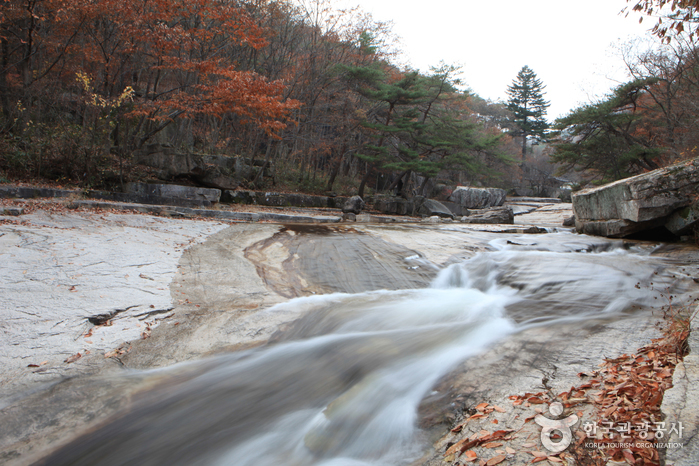
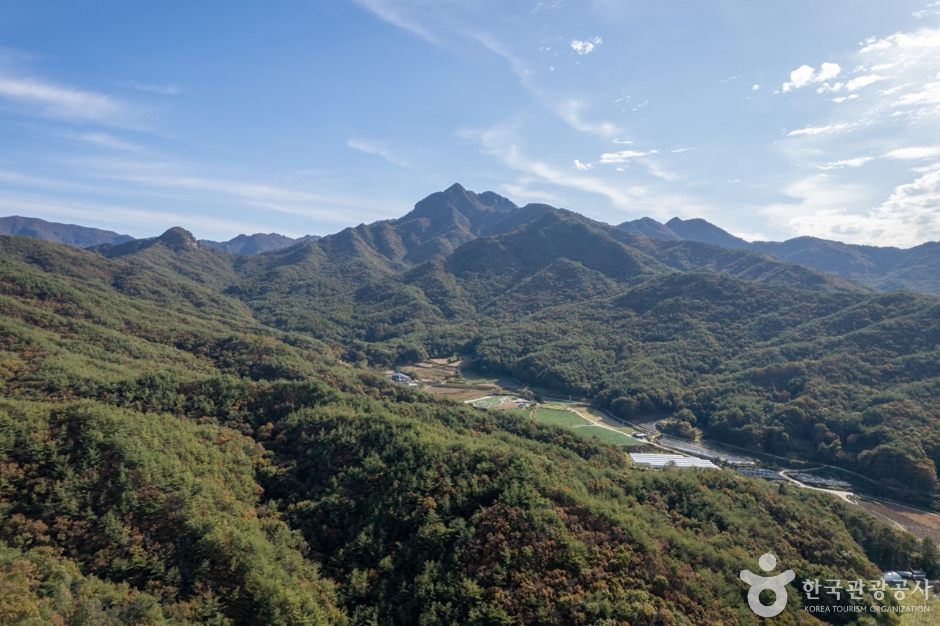

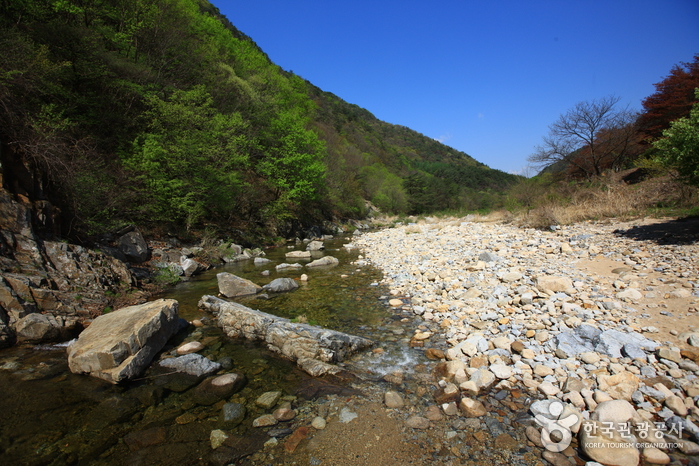
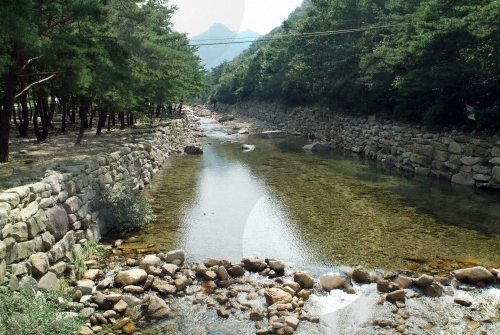
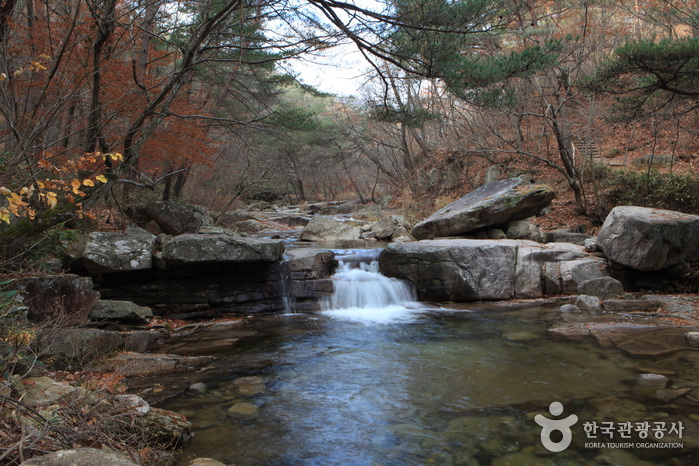
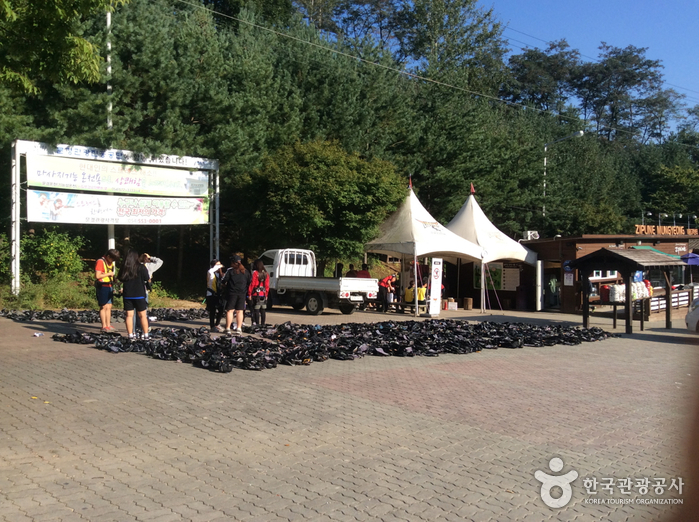
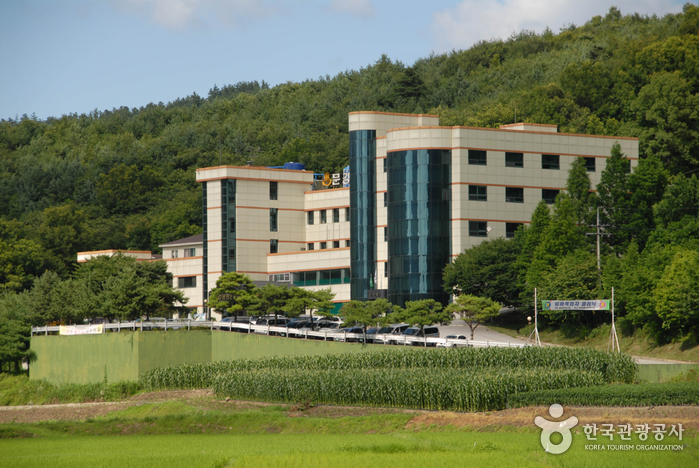
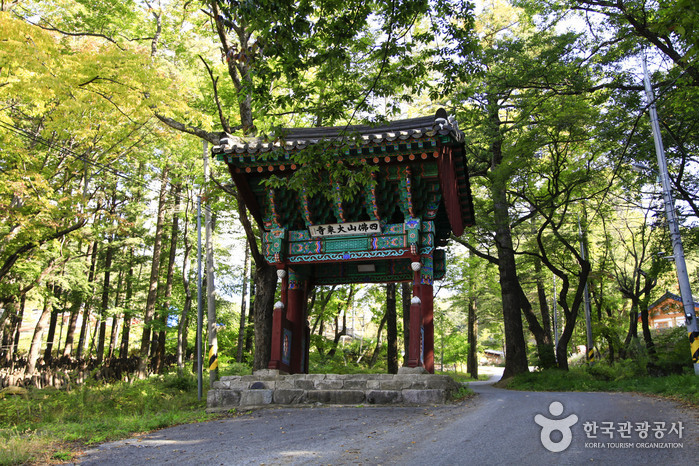
 English
English
 한국어
한국어 日本語
日本語 中文(简体)
中文(简体) Deutsch
Deutsch Français
Français Español
Español Русский
Русский